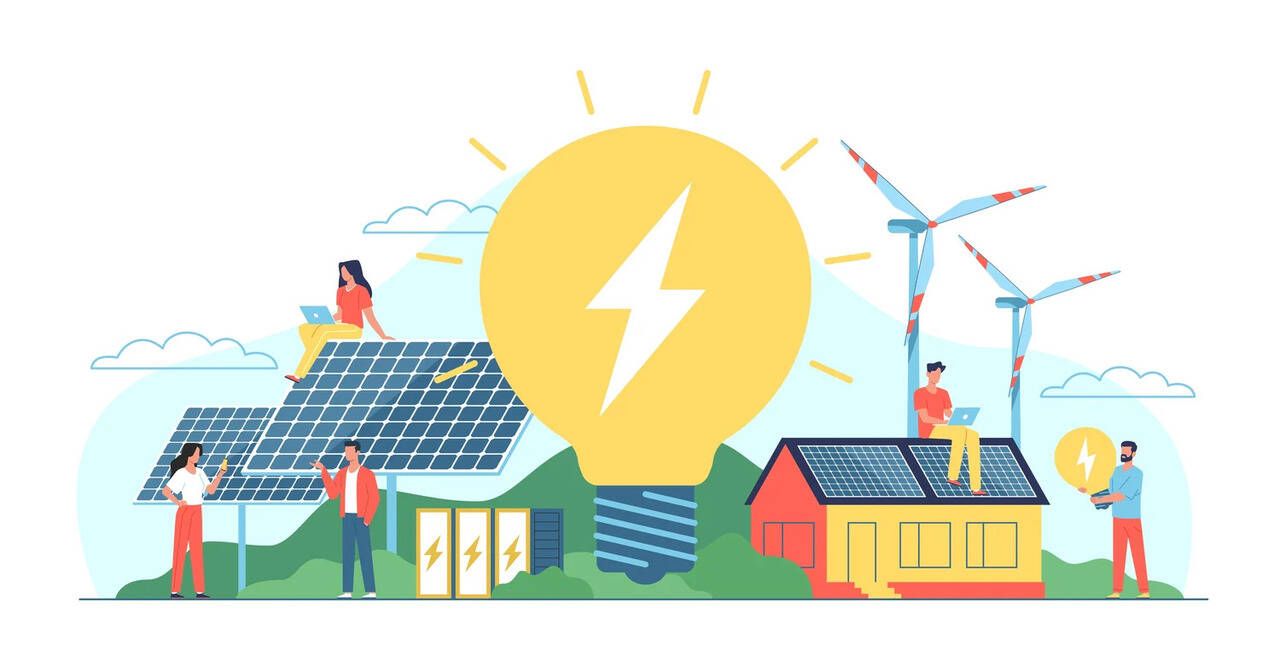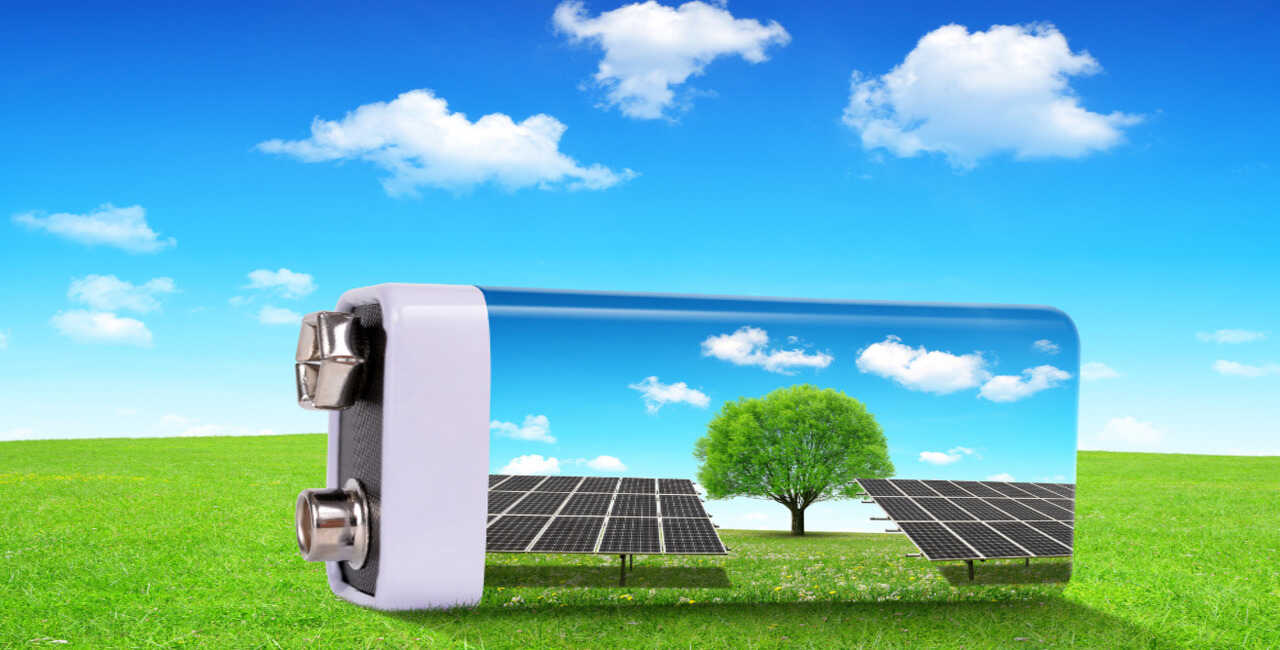What Is The Cheapest Way To Store Solar Energy?

As the global consciousness shifts towards sustainable practices, the demand for renewable energy has never been more pronounced. The urgency to mitigate the environmental impacts of conventional energy sources has propelled the exploration and adoption of renewable alternatives. This brief overview will delve into the growing significance of renewable energy and the pivotal role it plays in addressing the challenges posed by climate change.
With the specter of climate change looming, the imperative to transition from fossil fuels to cleaner and more sustainable energy sources has gained unprecedented momentum. Governments, industries, and individuals worldwide are recognizing the need to reduce carbon emissions and embrace environmentally friendly alternatives. Renewable energy, encompassing sources like solar, wind, hydropower, and geothermal, stands at the forefront of this transformative shift.
The growing importance of renewable energy is underscored by its inherent ability to harness power from the natural elements without depleting finite resources or emitting harmful pollutants. This transition not only addresses environmental concerns but also fosters energy security, reduces dependency on fossil fuels, and opens new avenues for technological innovation.
Introduction to the Concept of Solar Energy Storage
Within the realm of renewable energy, solar power emerges as a beacon of promise. The sun, an abundant and perennial source of energy, can be harnessed through photovoltaic cells to generate electricity. However, one of the challenges associated with solar power is its intermittent nature, dependent on weather conditions and daylight availability. Introducing the concept of solar energy storage becomes paramount in addressing this intermittency, ensuring a consistent and reliable power supply even when the sun is not shining.
In the subsequent sections, we will delve into the various facets of solar energy storage, examining the different methods, efficiency considerations, and cost-effectiveness, with the ultimate goal of identifying the most pragmatic solutions for a greener and economically sustainable future.
What is Solar Energy Storage?
Harnessing the power of the sun through solar panels has revolutionized the energy landscape, but the intermittent nature of sunlight poses a challenge for a consistent power supply. Solar energy storage addresses this challenge by capturing excess energy generated during peak sunlight hours and storing it for use during periods of low or no sunlight. This section explores the definition, significance, and various methods employed in solar energy storage.
Solar energy storage refers to the process of capturing and storing excess energy produced by solar panels for later use, ensuring a continuous and reliable power supply. The significance of solar energy storage lies in its ability to address the intermittency of sunlight, enabling a seamless integration of solar power into the broader energy grid. This not only promotes energy independence but also contributes to grid stability and reliability.
Solar energy storage systems play a crucial role in maximizing the utilization of solar power, allowing users to access electricity even when the sun is not shining. This capability is particularly essential for residential, commercial, and industrial applications, where a consistent power supply is imperative for daily operations.
Brief Explanation of Different Methods:
Storing Solar Energy Without Batteries
One method of storing solar energy without batteries involves the use of solar thermal technologies. In solar thermal systems, excess energy is used to heat a fluid, such as molten salt or water, which can then be stored in insulated tanks. This stored thermal energy can be converted back into electricity when needed, providing a continuous power supply.
Another approach involves using compressed air energy storage, where excess energy is used to compress air and store it in underground reservoirs. During periods of low sunlight, the compressed air is released, driving a turbine to generate electricity.
Storing Solar Energy in Batteries
Battery storage is a widely adopted and versatile method for storing solar energy. During peak sunlight hours, excess energy generated by solar panels is stored in batteries for later use. Lithium-ion batteries are commonly used due to their high energy density, efficiency, and relatively low maintenance requirements. These batteries provide a reliable and scalable solution for residential, commercial, and utility-scale applications.
Additionally, lead-acid batteries and emerging technologies such as flow batteries and solid-state batteries are also being explored for their potential in solar energy storage, offering different combinations of cost, performance, and sustainability.
Types of Solar Energy Storage Systems

Effective solar energy storage involves a diverse array of technologies, each with its unique strengths and applications. In this section, we provide an overview of various solar energy storage technologies, encompassing battery-based systems, thermal energy storage, pumped hydro storage, and flywheel energy storage.
Overview of Various Storage Technologies
- Battery-Based Systems: Battery-based systems are among the most prevalent and versatile solutions for solar energy storage. Lithium-ion batteries, commonly used in electric vehicles and renewable energy applications, have gained prominence due to their high energy density, efficiency, and relatively long lifespan. These batteries store excess solar energy during periods of sunlight and release it when demand exceeds the solar generation. Other battery technologies, such as lead-acid batteries and emerging options like flow batteries, offer different trade-offs in terms of cost, performance, and environmental impact.
- Thermal Energy Storage: Thermal energy storage systems store solar energy in the form of heat. This category includes technologies like molten salt storage, where concentrated solar power systems use mirrors to focus sunlight on a receiver, heating molten salt to high temperatures. This stored heat can be used to generate steam and drive turbines, producing electricity when needed. Thermal energy storage is known for its extended storage durations and ability to provide continuous power, even after the sun has set.
- Pumped Hydro Storage: Pumped hydro storage is a well-established and widely used form of energy storage. Excess electricity is used to pump water from a lower reservoir to an upper reservoir during times of high energy availability. When electricity demand increases, water is released from the upper reservoir to the lower reservoir, passing through turbines to generate electricity. Pumped hydro storage is valued for its large-scale capacity, rapid response times, and ability to store energy over extended periods.
- Flywheel Energy Storage: Flywheel energy storage systems store energy by spinning a rotor (flywheel) at high speeds and converting kinetic energy into electricity when needed. Excess solar energy is used to accelerate the flywheel, and when electricity demand rises, the kinetic energy is converted back into electricity. Flywheel systems are known for their quick response times and ability to provide short bursts of high-power output.
Understanding the characteristics and applications of these diverse storage technologies is crucial for tailoring solar energy storage solutions to specific needs, whether at a residential, commercial, or utility scale. In the subsequent sections, we will delve into the advantages, limitations, and considerations for each type of solar energy storage system, aiding in the selection of the most suitable technology for various applications.
What is the Most Efficient Way to Store Solar Energy?
Efficiency is a paramount consideration in selecting a solar energy storage method, impacting both the economic viability and environmental sustainability of renewable energy systems. This section conducts an analysis of efficiency across different storage methods, discusses factors influencing efficiency, and aims to identify the most efficient and cost-effective solutions.
Analysis of Efficiency in Different Storage Methods
Battery-Based Systems:
Battery systems exhibit high round-trip efficiency, indicating how effectively stored energy can be retrieved. Lithium-ion batteries, for example, often achieve efficiencies above 90%. However, it's essential to consider factors like self-discharge rates and degradation over time, which can affect overall efficiency.
Thermal Energy Storage:
The efficiency of thermal energy storage depends on the specific technology used. Molten salt storage systems, prevalent in concentrated solar power applications, can achieve high efficiencies due to their ability to store and release heat effectively. However, thermal losses during the storage and conversion processes can impact overall efficiency.
Pumped Hydro Storage:
Pumped hydro storage systems are known for their high round-trip efficiency, often exceeding 80%. The efficiency is influenced by factors such as the elevation difference between reservoirs, turbine and pump efficiency, and losses in the water conveyance system.
Flywheel Energy Storage:
Flywheel systems offer rapid response times and high-power output but may have lower round-trip efficiency compared to some other technologies. The efficiency is influenced by factors such as frictional losses and energy losses due to air resistance.
Discussion on Factors Influencing Efficiency
- System Design: The design of the storage system, including the components used and their configuration, can significantly impact efficiency. Well-designed systems maximize the conversion and retrieval of stored energy.
- Technology-Specific Considerations: Each storage technology has its unique characteristics that influence efficiency. For instance, battery efficiency may be affected by the choice of electrodes and electrolytes, while thermal storage systems are influenced by the insulation and heat transfer mechanisms.
- Temperature and Environmental Conditions: Temperature plays a critical role in the efficiency of many storage technologies, especially batteries. Extreme temperatures can affect the chemical reactions and overall performance, influencing efficiency.
- Cycle Life and Degradation: The longevity of the storage system, including the number of charge-discharge cycles it can endure before degradation, is crucial. Systems with longer cycle life often offer better long-term efficiency.
Identifying the Most Efficient and Cost-Effective Solutions
Selecting the most efficient and cost-effective solar energy storage solution requires a holistic consideration of various factors, including initial costs, maintenance requirements, and the specific energy needs of the application. While lithium-ion batteries are widely used for their high efficiency, other technologies may offer better suitability for certain applications or economic advantages over time.
What is the Cheapest Form of Energy Storage?

As the world seeks sustainable energy solutions, the cost-effectiveness of solar energy storage systems becomes a pivotal factor in their widespread adoption. This section conducts a cost analysis of different solar energy storage systems, evaluates initial setup costs and maintenance expenses, and aims to identify the most budget-friendly options for diverse applications.
Cost Analysis of Different Solar Energy Storage Systems
1. Battery-Based Systems:
- Lithium-Ion Batteries: The cost of lithium-ion batteries ranges from $200 to $300 per kilowatt-hour (kWh). Prices have been decreasing steadily over the years due to advancements in technology and economies of scale.
- Lead-Acid Batteries: Lead-acid batteries are generally less expensive, with costs ranging from $100 to $200 per kWh. However, they may have shorter lifespans and lower efficiency compared to lithium-ion batteries.
- Emerging Technologies (Flow Batteries, Solid-State Batteries): Costs for emerging battery technologies can vary widely, but they are generally higher than those for established lithium-ion and lead-acid batteries. As technology matures and production scales up, costs are expected to decrease.
2. Thermal Energy Storage:
- Molten Salt Storage: The cost of molten salt storage is influenced by the specific concentrated solar power (CSP) system used. Costs can range from $20 to $50 per kWh of storage capacity. The upfront infrastructure costs for CSP systems using molten salt can be substantial.
3. Pumped Hydro Storage:
- The cost of pumped hydro storage varies based on factors such as the size of the facility and the terrain. Large-scale pumped hydro storage projects can have costs ranging from $100 to $500 per kWh, with much of the expense associated with constructing reservoirs and hydraulic structures.
4. Flywheel Energy Storage:
- The cost of flywheel energy storage systems can range from $500 to $1,000 per kWh. Flywheel systems typically have higher upfront costs due to precision engineering requirements but may have lower maintenance expenses.
Evaluating Initial Setup Costs and Maintenance Expenses
Initial Setup Costs:
- The cost of setting up solar energy storage systems includes the purchase and installation of components such as batteries, inverters, control systems, and associated infrastructure. Battery-based systems, especially lithium-ion batteries, often have higher initial costs.
- Pumped hydro storage involves significant construction expenses related to reservoirs, turbines, and pump stations.
- Thermal energy storage requires specialized equipment for capturing and storing heat, contributing to initial costs.
- Flywheel systems require precision-engineered components, impacting their initial setup costs.
Maintenance Expenses:
- Maintenance costs vary among different systems. Battery-based systems generally have lower maintenance requirements, while pumped hydro storage may incur maintenance expenses related to mechanical components and water conveyance systems.
- Thermal energy storage systems may require periodic inspections and maintenance of heat capture and release mechanisms.
- Flywheel systems may have lower maintenance requirements compared to some other technologies.
Identifying the Most Budget-Friendly Option
The choice of the cheapest way to store solar energy depends on the specific context and requirements of the project. Lithium-ion batteries are often favored for their versatility and decreasing costs, but other technologies like pumped hydro storage and molten salt storage can be more cost-effective in certain situations. As technology evolves and markets change, it's essential to stay informed about the latest developments in the energy storage sector.
FAQs
- How Long Can Solar Energy Be Stored?
While there are differences in battery types, a standard solar battery can store energy for one to five days.
2. How to Store Solar Energy at Home?
The approach that is most commonly used for storing solar energy in residential systems is by far the use of batteries. A chemical reaction occurs among the battery's constituent parts when solar energy is introduced. This reaction stores the energy. When the battery is depleted, the reaction is reversed, enabling current to flow out of the battery.
3. Is it worth storing solar energy?
The importance of solar storage to you may change if you utilize a lot of grid electricity. If you want to get as much of your energy usage off the grid as possible, solar storage is a fantastic alternative for lowering your dependency on the power grid.
Conclusion
Determining the cheapest way to store solar energy involves considering a range of factors, including the initial cost, efficiency, lifespan, and maintenance expenses of various storage technologies. While lithium-ion batteries have dominated the market with their proven track record and decreasing costs, emerging technologies like flow batteries, compressed air energy storage, and thermal energy storage present promising alternatives. The optimal choice depends on the specific requirements of the application, geographic location, and available resources.
As technology continues to evolve and economies of scale drive down costs, the landscape of solar energy storage is likely to undergo further transformations. Government incentives, research and development efforts, and market competition will also play crucial roles in shaping the future of affordable and sustainable energy storage solutions. In the pursuit of a cleaner and more sustainable energy future, ongoing innovation and collaboration across various sectors will be key to unlocking even more cost-effective and efficient ways to store solar energy.

